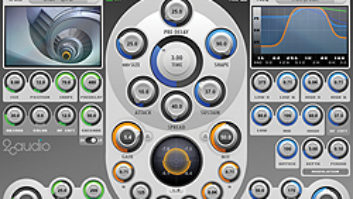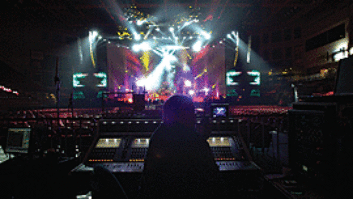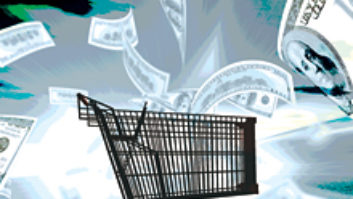
Go to any forum where recording engineers discuss music and you’ll encounter opinions. A lot of opinions. Many don’t reference facts, because sound is subjective. They say that a compressor “glues” tracks together, or an EQ has a “warm” or “transparent” sound. Often, they apply these loving descriptions to vintage gear, or software emulations of said gear.
As to whether software emulations can sound exactly like vintage gear, there have been plenty of A-B comparisons where “golden ear” types can’t tell the difference between the original gear and the emulation. So, we know it’s at least possible to emulate vintage gear in software with extreme precision, even if that goal isn’t always achieved.
But why is there a fascination with vintage gear, anyway? Does it really sound “warm,” “transparent,” “silky” and the like? Or is there something else to consider?
ROLL YOUR OWN
I’m old enough to have used Pultec EQs when they were new hardware. I always liked what they did to tracks and program material; it sometimes seemed downright difficult to dial in “wrong” settings. Naturally, I was quite pleased when software emulations appeared that could join my digital world and sound like what I’d used back in the “big studio” days.
Then I ran across a post from someone who bemoaned that his DAW had an emulation of the Pultec EQP-1, but not the companion MEQ-5—he had “only” a six-stage parametric. However, because his DAW allowed creating effects chains with custom front panels and the user’s choice of controls and curves, I thought it would be a fun project to try and emulate a Pultec MEQ-5 with parametric EQ. That meant having the same controls, with the same characteristics and ranges. I even added a hint of harmonic distortion.
I didn’t have a hardware unit for comparison, but when compared to various software emulations, I couldn’t tell the difference, and I doubt most other people could, either. Most important, when applied to audio, it produced the same overall change in timbre. Although I’d done this project mainly to provide fodder for a weekly blog, over time I often ended up using the “faux” MEQ-5.
Concurrently, I started checking out other vintage EQ models in depth, to determine whether I could benefit from the various vintage “characters.” I appreciated that they had various differences and sonic qualities, but… Then it hit me.
With enough effort, I could obtain the sound of any vintage EQ with a good parametric. Although maybe it wasn’t accurate down to the last tenth of a dB, even an expert would have a hard time telling the difference. In any case, the musical result in a mix was indistinguishable. Give me a curve from a vintage EQ, and it is possible to do a convincing reproduction. Still, the key phrase is “with enough effort.” I realized that there was more to vintage EQ than the sound. It was also about limiting your choices.
INSPIRED BY LIMITS
Hardware constrains design options. Only so many knobs can fit on a front panel. A rotary switch can select only so many positions that choose a frequency. Passive devices couldn’t produce sharp peaks like today’s active devices, so by definition, their changes tended to be subtle.
When designing an equalizer, engineers had to think carefully about what frequencies would have the maximum musical impact. They had to decide whether the panel space they could dedicate to one low-band knob was better served with a lowpass filter, a bell response, or a shelf…and if a shelf, whether it should have resonance.
If a lowpass, what kind of slope? Or maybe it was worth removing something else to make room for a switch that could choose between a bell and shelf response.
Open Channel: Welcome to the Middle Ages
Open Channel: Welcome to the Renaissance!
So when today’s recording engineers talk about how vintage EQs somehow make it magically easier to get the sound they want quickly, it’s because their controls were designed to do exactly that. Also, studio time was expensive. You couldn’t spend hours agonizing over EQ settings—you had to dial in the right frequencies as rapidly as possible.
Meanwhile, this caused another side effect: promoting spontaneity. As mentioned before, until very recently, music was a real-time, evanescent experience. Perhaps one reason why people gravitate to “classic” rock music is because it was recorded quickly and in-the-moment, so the results incorporated the spontaneous feel that’s part of live music. The vintage gear of that time didn’t get in the way of spontaneity.
So… I don’t think models of vintage gear are snake oil (although I am skeptical about claims of using reverse-engineered alien technology to obtain “the quintessential, precedent-shattering apex of consummate warmth and transparency”). The inconvenient truth is that the people who designed older gear didn’t just give you a device that could do anything, and then say “hey, you figure it out.” They purposely avoided being a jack-of-all-trades in favor of being a master of one thing—making the process of recording, producing and mixing music faster and more liberating.
The other inconvenient truth is that today’s spectacularly capable gear, with hundreds if not thousands of options, may be impeding the process of making great music—not helping it.







